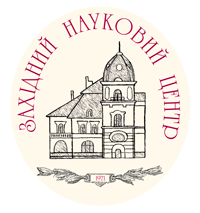Tetyana BODNAR, Mariya LOPACHAK, Lidiya BOICHYSHYN
Ivan Franko National University of Lviv, Kyryla i Mefodia Str., 6, 79005 Lviv, Ukraine e-mail: bodnar.tanya99@gmail.com
DOI: https://doi.org/10.37827/ntsh.chem.2025.78.253
EFFECT OF CHROMIUM ALLOYING ON THE CORROSION RESISTANCE OF COBALT-BASED AMORPHOUS ALLOYS IN 0,1 М HCl
Of particular note are Amorphous metal alloys (AMA) based on cobalt, which find application in the production of sensors, transformers, electron beam devices, as well as in electrocatalysis processes, including hydrogen evolution reactions. Therefore, it is necessary to investigate the effect of chromium alloying on the corrosion resistance of amorphous alloys based on cobalt in 0.1 M HCl. Because of it the purpose of the work is research aimed at studying the long-term stability of the passive state of AMA in HCl solution. Important factors that can regulate corrosion resistance are surface modification and synthesis methods of AMC. In particular, modern methods such as acid etching, high-temperature deposition, mechanical alloying followed by ultra-high-pressure pressing allow optimizing the structure and morphology of alloys. As a result, a dense passive film is formed, resistant to Cl⁻ penetration and able to stabilize even under dynamic conditions. Therefore, AMCs have significant potential for use in biomedical implants, marine equipment, nuclear reactor parts, and chemical reactors. Their durability, high strength and chloride resistance ensure competitiveness with the best modern alloys. To assess the influence of alloying applications on the electrochemical properties and the formation of protective layers of the AMA of the Co–TM–Si–B (TМ = Fe, Cr) system in aggressive environments, the method of cyclic voltammetry in the potentiodynamic mode with automatic time sweep of the given potential of the metal surface according to the three-electrode scheme was used. It was investigated that doping of AMА Co-Si-B 5 at. % Fe leads to a shift in the corrosion potential to the cathode side and an increase in the values of the charge transfer coefficient to 0.1 when the electrode is polarized to the cathode side. That is, there is an easing of reduction processes compared to oxidizing ones, with an increase in polarization time (cycle 10). It was also found that doping of AMА Co–Si–B 9 at. % Cr does not change the corrosion potential, meaning it remains constant. Which indicates the high electrochemical stability of the AMА electrode. It is also worth noting that the values of corrosion currents are practically stable at 10–20 μA/cm2, which indicates a good corrosion resistance of this amorphous alloy. It follows that the electrochemical activity of AMA is largely dependent on composition and doping: the introduction of Fe and Cr changes electrode parameters, corrosion potential, and kinetics of redox processes. A comprehensive study of Tafel parameters allows us to conclude that the Co68Cr9Si11B12 alloy is the most resistant to corrosion among those studied.
Keywords: amorphous metal alloy, corrosion, cyclic voltammetry.
References:
-
1. Chen F., Zhou J., Su C., Zhang C., Zhang H., Guo S. Catalytic properties of Fe-based amorphous alloys with
different Mo content after acid corrosion. J. Non-Cryst. Solids. 2024. Vol. 646. P. 123249.
(
https://doi.org/10.1016/j.jnoncrysol.2024.123249).
2. Yang X., Li W., Zhou J., Zhang W., Yan Y. Development of non-equiatomic Cu₂Nb₅.₆Cr₄Fe₁₀Co₂Ni₅ high-entropy
amorphous alloy with excellent mechanical and corrosion performanceю Mater. Lett. 2025. Vol. 396. P. 138739.
3. Li X., Li Q., Zhang C., Jiang L., Zhang G., Chang C. Development of Cr-based bulk metallic glass and amorphous
alloy coatings via HVOF spraying with exceptional corrosion and wear resistance. Surf. Coat. Technol. 2025. Vol.
504. P. 132036. https://doi.org/10.1016/j.surfcoat.2025.132036.
4. Inoue A., Zhang T., Masumoto T. Recent development and application products of bulk glassy alloys. Mater.
Trans. 2004. Vol. 45(4). P. 1145–1153. https://doi.org/10.1016/j.actamat.2010.11.027.
5. Xu D., Duan G., Johnson W. L. Unusual glass-forming ability of bulk amorphous alloys based on rare-earth
metals. Phys. Rev. Lett. 2004. Vol. 92(24). P. 245504. https://doi.org/10.1103/PhysRevLett.92.245504.
6. Wang D.P., Wang S.L., Wang J.Q. Relationship between amorphous structure and corrosion behaviour in a Zr–Ni
metallic glass Corros. Sci. 2012. Vol. 59. P. 88–95. https://doi.org/10.1016/j.corsci.2012.02.017.
7. Gostin P.F., Gebert A., Schultz L. Comparison of the corrosion of bulk amorphous steel with conventional steel.
Corros. Sci. 2010. Vol. 52(1). P. 273–281. https://doi.org/10.1016/j.corsci.2009.09.016.
8. Muftah W., Allport J., Vishnyakov V. Corrosion performance and mechanical properties of FeCrSiNb amorphous
equiatomic HEA thin film. Surf. Coat. Technol. 2021. Vol. 422. Article ID 127486.
https://doi.org/10.1016/j.surfcoat.2021.127486.
9. Hashimoto K., Naka M., Asami K., Masumoto T. The role of alloying elements in improving the corrosion
resistance of amorphous iron base alloys. Corros. Sci. 1979. Vol. 19. P. 857–867.
https://doi.org/10.1016/S0010-938X(79)80109-2.
10. Gao Z., Hua Y., Zhou C.Z. et al. Effect of nanocrystallization and phase separation on corrosion behavior of
Fe-based metallic glasses. Appl. Surf. Sci. 2025. Vol. 685. Article ID 162091.
11. Zhang S., Wu C.L., Zhang C.H. et al. Laser surface alloying of FeCoCrAlNi high-entropy alloy on 304 stainless
steel. Opt. Laser Technol. 2016. Vol. 84. P. 23–31. https://doi.org/10.1016/j.optlastec.2016.04.011
12. Kim J.-J., Choi Y., Suresh S., Argon A.S. Nanocrystallization during nanoindentation of a bulk amorphous metal
alloy. Science. 2002. Vol. 295(5555). P. 654–657. https://doi.org/10.1126/science.1067453.
13. Nosenko V.K. Amorphous and nanocrystalline alloys for instrument construction and energy-efficient
technologies. Visn. National Academy of Sciences of Ukraine. 2015, No 4. P. 68–79.
https://doi.org/10.15407/visn2015.04.068.
14. Maria Lopachak, Lidia Boychyshyn. Corrosion properties of amorphous cobalt-based alloys doped with Cr and Fe
in a 0.3% sodium chloride solution. Collection of scientific works: Ch. 2 /A. O. Omelchuk, R. Y. Gladyshevskyi, О.
V. Reshetnyak (ed.). Lviv: DVC NTSh, 2018. P. 411–413.
15. Lopachak M., Boichyshyn L., Pandiak N., Nosenko V. Chapter 30. Iron and Chromium Influence on Crystallization
Kinetics of Cobalt-Based Amorphous Alloys. Nanomaterials and Nanocomposites, Nanostructures, and Their
Applications – Springer Cham, 2024. Vol. 253. P. 443-452. https://doi.org/10.1007/978-3-031-67519-5.
How to Cite
BODNAR T., LOPACHAK M., BOICHYSHYN L. EFFECT OF CHROMIUM ALLOYING ON THE CORROSION RESISTANCE OF COBALT-BASED AMORPHOUS ALLOYS IN 0,1 М HCl. Proc. Shevchenko Sci. Soc. Chem. Sci. 2025. Vol. 78. P. 253-260.

